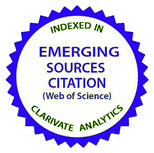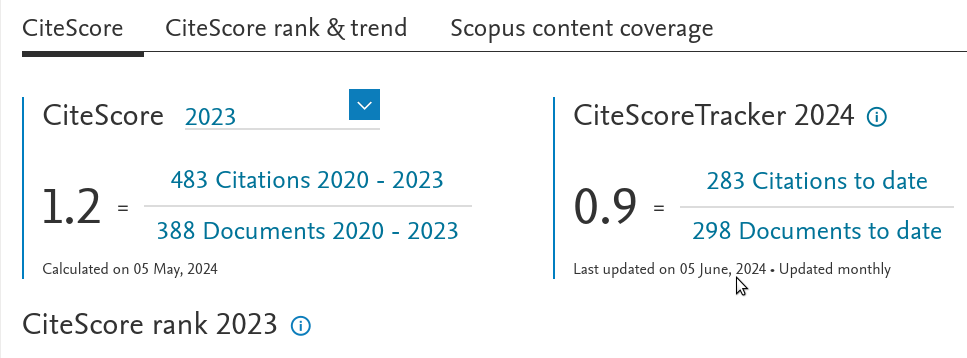Вплив дефектних станів інтерфейсу на фотоелектричні властивості гетероструктур InxGa1-xAs/GaAs з квантовими точками
DOI:
https://doi.org/10.15407/ujpe56.9.940Ключові слова:
-Анотація
У гетероструктурах InxGa1–xAs/GaAs з ланцюгами квантових точок (КТ) з різною концентрацією x індію досліджено властивості латерального фотоструму. При зона-зонному збудженні КТ квантами h\ν = 1,2 еВ структури виявили довготривалу динаміку наростання та релаксації фотоструму, а також ефект залишкової провідності після вимкнення збуджувального випромінювання. Аналіз даних із термостимульованої провідності (ТСП) після збудження оптичним випромінюванням в області поглинання КТ засвідчив такі значення енергетичних рівнів дефектних станів відносно зони провідності GaAs: 0,11 еВ, 0,16 еВ, 0,21 еВ, 0,24 еВ та 0,35 еВ. На дослідах латеральної фотопровідності (ЛФП) виявлено переходи за участю рівнів електронних пасток власних дефектів у GaAs EL2 та EB3. У найпростішому випадку наноструктурного фотопровідника з одним центром прилипання для електронів провідності отримано аналітичний
вигляд кінетики фотоструму, який підтверджено на дослідах зі зразками In0,4Ga0,6As/GaAs. Кінетика фотопровідників
In0,5Ga0,5As/GaAs дещо складніша і описана лише якісно.
Посилання
M. Grundmann, O. Stier, and D. Bimberg, Phys. Rev. B 52, 11969 (1995).
https://doi.org/10.1103/PhysRevB.52.11969
E.B. Foxman, P.L. McEuen, U. Meirav, N.S. Wingreen, Y. Meir, P.A. Belk, N.R. Belk, M.A. Kastner, and S.J. Wind, Phys. Rev. B 47, 10020 (1993).
https://doi.org/10.1103/PhysRevB.47.10020
Y. Meir, N.S. Wingreen, and P.A. Lee, Phys. Rev. Lett. 66, 3048 (1991).
https://doi.org/10.1103/PhysRevLett.66.3048
V.S. Vavilov, P.C. Euthymiou, and G.E. Zardas, Usp. Fiz. Nauk 169, 209 (1999).
https://doi.org/10.3367/UFNr.0169.199902e.0209
Ì.K. Sheinkman and A.Ya. Shik, Fiz. Tekhn. Polupr. 10, 209 (1976).
L.I. Grossweiner, J. Appl. Phys. 24, 1306 (1953).
https://doi.org/10.1063/1.1721152
D.S. Misra, A. Kumar, and S.C. Agarwal, Phys. Rev. B 31, 1047 (1985).
https://doi.org/10.1103/PhysRevB.31.1047
A.G. Milnes, Deep Impurities in Semiconductors (Wiley-Interscience, New York, 1973).
O.V. Vakulenko, S D. Kondratenko, S.L. Golovinskii, and I.A. Grin', Visn. Kyiv. Univers. Ser. Fiz. Mat. Nauk. 2, 247 (2010).
T. Asano, Z. Fang, and A. Madhukar, J. Appl. Phys. 107, 073111 (2010).
https://doi.org/10.1063/1.3359704
S.W. Lin, C. Balocco, M. Missous, A.R. Peaker, and A.M. Song, Phys. Rev. B 72, 165302 (2005).
J.S. Kim, E.K. Kim, W.J. Choi, J.D. Song, and J.I. Lee, Jpn. J. Appl. Phys. 45, 5575 (2006).
https://doi.org/10.1143/JJAP.45.5575
G.M. Martin, A. Mitonneau, and A. Mircea, Electron. Lett. 13, 191 (1977).
https://doi.org/10.1049/el:19770140
P. Bräunlich, Appl. Phys. Lett. 38, 2516 (1967).
https://doi.org/10.1063/1.1709939
M. Shafi, R.H. Mari, A. Khatab, D. Taylor, and M. Henini, Nanoscale Res. Lett. 5, 1948 (2010).
https://doi.org/10.1007/s11671-010-9820-x
D.P. Popescu, P.G. Eliseev, A. Stintz, and K.J. Malloy, Semicond. Sci. Technol. 19, 33 (2004).
https://doi.org/10.1088/0268-1242/19/1/005
W.-H. Chang, T.M. Hsu, C.C. Huang, S.L. Hsu, C.Y. Lai, N.T. Yeh, T.E. Nee, and J.-I. Chyi, Phys. Rev. B 62, 6959 (2000).
https://doi.org/10.1103/PhysRevB.62.6959
J.L. Casas Espinola, M. Dybic, S. Ostapenco, T.V. Torchynska, and G. Polupan, J. Phys. Conf. Series 61, 180 (2006).
https://doi.org/10.1088/1742-6596/61/1/036
J. Bloch, J. Shah, L.N. Pfeiffer, K.W. West, and S.N.G. Chu, Appl. Phys. Lett. 77, 2545 (2000).
https://doi.org/10.1063/1.1289493
K. Mukai, N. Ohtsuka, and M. Sugawara, Appl. Phys. Lett. 70, 2416 (1997).
https://doi.org/10.1063/1.118889
Y.T. Dai, J.C. Fan, Y.F. Chen, R.M. Lin, S.C. Lee, and H.H. Lin, J. Appl. Phys. 82, 4489 (1997).
https://doi.org/10.1063/1.366255
O.V. Vakulenko and M.P. Lisitsa, Optical Recharging Recharge of Impurity in Semiconductors (Naukova Dumka, Kiev, 1992) (in Russian).
V.I. Borisov, V.A. Sablikov, I.V. Borisova, and A.I. Chmil', Fiz. Tekhn. Polupr. 33, 68 (1999).
https://doi.org/10.1134/1.1187648
M.V. Fock, Introduction into Kinetics of Crystal Luminescence (Nauka, Moscow, 1964) (in Russian).
https://doi.org/10.1016/B978-0-08-010061-6.50007-X
Ì.Ì. Sobolev, I.V. Kochnev, V.M. Lantratov, N.A. Bert, N.A. Cherkashin, N.N. Ledentsov, and D.A. Bedarev, Fiz. Tekhn. Polupr. 34, 200 (2000).
https://doi.org/10.1134/1.1187932
R.H. Bube, Photoconductivity of Solids (Wiley, New York, 1960).
##submission.downloads##
Опубліковано
Як цитувати
Номер
Розділ
Ліцензія
Ліцензійний Договір
на використання Твору
м. Київ, Україна
Відповідальний автор та співавтори (надалі іменовані як Автор(и)) статті, яку він (вони) подають до Українського фізичного журналу, (надалі іменована як Твір) з одного боку та Інститут теоретичної фізики імені М.М. Боголюбова НАН України в особі директора (надалі – Видавець) з іншого боку уклали даний Договір про таке:
1. Предмет договору.
Автор(и) надає(ють) Видавцю безоплатно невиключні права на використання Твору (наукового, технічного або іншого характеру) на умовах, визначених цим Договором.
2. Способи використання Твору.
2.1. Автор(и) надає(ють) Видавцю право на використання Твору таким чином:
2.1.1. Використовувати Твір шляхом його видання в Українському фізичному журналі (далі – Видання) мовою оригіналу та в перекладі на англійську (погоджений Автором(ами) і Видавцем примірник Твору, прийнятого до друку, є невід’ємною частиною Ліцензійного договору).
2.1.2. Переробляти, адаптувати або іншим чином змінювати Твір за погодженням з Автором(ами).
2.1.3. Перекладати Твір у випадку, коли Твір викладений іншою мовою, ніж мова, якою передбачена публікація у Виданні.
2.2. Якщо Автор(и) виявить(лять) бажання використовувати Твір в інший спосіб, як то публікувати перекладену версію Твору (окрім випадку, зазначеного в п. 2.1.3 цього Договору); розміщувати повністю або частково в мережі Інтернет; публікувати Твір в інших, у тому числі іноземних, виданнях; включати Твір як складову частину інших збірників, антологій, енциклопедій тощо, то Автор(и) мають отримати на це письмовий дозвіл від Видавця.
3. Територія використання.
Автор(и) надає(ють) Видавцю право на використання Твору способами, зазначеними у п.п. 2.1.1–2.1.3 цього Договору, на території України, а також право на розповсюдження Твору як невід’ємної складової частини Видання на території України та інших країн шляхом передплати, продажу та безоплатної передачі третій стороні.
4. Строк, на який надаються права.
4.1. Договір є чинним з дати підписання та діє протягом усього часу функціонування Видання.
5. Застереження.
5.1. Автор(и) заявляє(ють), що:
– він/вона є автором (співавтором) Твору;
– авторські права на даний Твір не передані іншій стороні;
– даний Твір не був раніше опублікований і не буде опублікований у будь-якому іншому виданні до публікації його Видавцем (див. також п. 2.2);
– Автор(и) не порушив(ли) права інтелектуальної власності інших осіб. Якщо у Творі наведені матеріали інших осіб за виключенням випадків цитування в обсязі, виправданому науковим, інформаційним або критичним характером Твору, використання таких матеріалів здійснене Автором(ами) з дотриманням норм міжнародного законодавства і законодавства України.
6. Реквізити і підписи сторін.
Видавець: Інститут теоретичної фізики імені М.М. Боголюбова НАН України.
Адреса: м. Київ, вул. Метрологічна 14-б.
Автор: Електронний підпис від імені та за погодження всіх співавторів.













